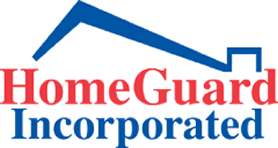What’s in The Pipes of Your New Home?

By The Responsible Flushing Alliance Editorial Council
Have You Considered a Sewer Lateral Inspection for the Pipes of Your New Home?
Becoming a homeowner in California comes with a wealth of benefits, from breathtaking Pacific views and scenic mountain climbs to serene desert retreats and vast farmland. However, it’s essential to remember that California is also earthquake territory, and the impact on service systems and infrastructure can be significant.
Navigating the Complexities of Real Estate
For most of us, real estate is an unfamiliar territory – and when it comes to purchasing a property, there are countless important factors to consider that may go unnoticed. Once the escrow has finally closed, you can breathe a massive sigh of relief. Congratulations, you have found your new home!
The Importance of Checking Your Main Water Line When Buying a Property
When purchasing a new property, a home inspector will provide you with a detailed list of discovered issues within your home. However, what most homeowners don’t realize is that the condition of the main water line that runs from their property to the town or city connection in the middle of the street is not included in the inspection. Unfortunately, we can’t personally evaluate what’s underground and the current condition of the water line until you take ownership of the property.
HomeGuard’s Sewer Lateral Inspection
Luckily, you can hire a reputable Sewer Lateral Inspector from HomeGuard who can perform a sewer lateral video inspection, a service that goes beyond standard home checklists. The report will inform the new homeowner of the sewer lateral’s current condition and provide repair or replacement recommendations, allowing new homeowners to confidently navigate the escrow process with a complete understanding of the condition of their underground pipes. With HomeGuard, you can access valuable data about your new property that might have otherwise been unattainable.
Responsibly Maintaining Sewer Lines After Property Acquisition
Acquiring a property with clean sewer lines is only the first step. It is your responsibility to ensure that they remain free of blockages and prevent potential damage in the future. Unfortunately, many Californians are still uncertain about what they can and cannot flush, which is why the Responsible Flushing Alliance exists to provide education and support.
The Importance of Proper Disposal of Wipes: Our Recent Findings
Our recent research revealed that over 20% of participants mistakenly believe that all types of wipes are flushable. In reality, only about 10% of wipes sold are suitable for flushing, while the remaining 90% are not. It is essential to always look for the “Do Not Flush” symbol on the wipes packaging and read the disposal instructions to avoid blockages and other issues.
Survey Shows that Majority of Californians Admit to Flushing Non-Flushable Paper Products
Despite knowing that not all paper products are flushable, a survey conducted last year by the Responsible Flushing Alliance found that 60% of Californians admitted to flushing items they knew they shouldn’t have within the past year.
Maintaining Optimal Functionality of Sewer Systems
Even with our best efforts, there is always more work to be done to keep our pipes functioning at their peak. In a state with nearly 40 million residents, even minor infractions can result in significant amounts of non-flushable materials entering and potentially clogging our sewers and municipal water systems.
Proper Disposal of Items to Avoid Plumbing Issues
Flushing particular objects down the toilet can lead to plumbing issues. To prevent this, it’s essential to dispose of the following items in the garbage:
- Baby wipes, cleaning wipes, and makeup wipes
- Disposable gloves, rags, and paper towels
- Condoms, tampons, and tissues
- Hair
- Dental floss
Avoid Flushing Inappropriate Items
It’s important to know which items are unsuitable for flushing the toilet. To find out, simply check the packaging for the “Do Not Flush” symbol. This symbol is prominently displayed on wipes that are designed for durability and do not break down easily in waste management systems like pipes and sewers. These wipes are intended to be disposed of in the trash after use.
The Impact of City Water System Blockages and Associated Costs in California
When these items end up in city water systems, they can cause blockages and lead to significant costs for Californian communities. On average, unplanned cleanup costs amount to almost $50 million, which puts a heavy burden on cities, towns, and taxpayers.
The Responsibility of Homeowners for Main Sewer Line Clogs
If a clog forms in the main sewer line connecting your home to the local system, the homeowner is solely responsible for the expenses associated with fixing it. This can be a significant financial burden, especially after making such a substantial financial commitment.
Achieving Better Results Through Understanding
Having a deeper understanding can lead to better outcomes. This is particularly true when it comes to maintaining your home. By visiting flushsmart.org, you can discover more tips to help you make informed decisions and avoid damaging your property. Remember, taking preventative measures is vital to keeping your pipes free of clogs.
HomeGuard Provides Sewer Lateral Inspections in Northern and Southern California
At HomeGuard, we understand the importance of a well-functioning sewer lateral system. Our team of experts is dedicated to providing top-notch sewer lateral inspection and repair services across Northern and Southern California. Whether you are located in Novato, Santa Cruz, Sacramento, Los Angeles, or San Diego, we have you covered.
Our comprehensive home inspection report and efficient sewer lateral repair service will ensure that your sewer system is in perfect working condition, providing peace of mind and avoiding costly repairs down the road. Don’t wait until it’s too late; contact us today to schedule your sewer lateral inspection, and let us help you maintain a healthy and functional sewer system.




